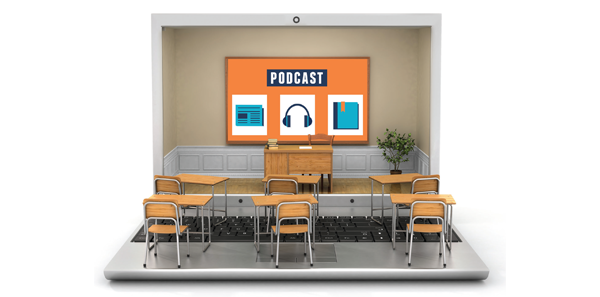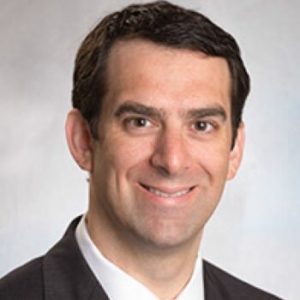
Four years ago, before the term “FOAM” had even been coined, I wrote in ACEP News for the very first time as a not-yet-graduated medical student. In that first article, I described how the advent of free open-access medical education provided a powerful new avenue for knowledge sharing in an unusual direction: from student to teacher.
Explore This Issue
ACEP Now: Vol 35 – No 09 – September 2016 In “Change from Below,” I argued that because medical students and residents were more likely to consume podcasts and blogs that advocated for cutting-edge approaches to emergency medicine, the junior member of a team might ever so occasionally be in possession of the most up-to-date knowledge on a particular topic. How, I asked, could that lowest member of the totem pole teach the advanced practice providers and senior clinicians they were training under about the latest in evidence-based medicine (EBM) without being “that guy”?
In “Change from Below,” I argued that because medical students and residents were more likely to consume podcasts and blogs that advocated for cutting-edge approaches to emergency medicine, the junior member of a team might ever so occasionally be in possession of the most up-to-date knowledge on a particular topic. How, I asked, could that lowest member of the totem pole teach the advanced practice providers and senior clinicians they were training under about the latest in evidence-based medicine (EBM) without being “that guy”?
The answer was for attendings themselves to solicit the latest in EBM from their students and junior residents during shifts by actively inviting the sharing of newly acquired medical knowledge. This approach would allow motivated learners an opportunity to show off their knowledge and would carry the fringe benefit for the attending and other providers of getting free digests on emerging concepts in our field.
The example I used to illustrate the point was the HINTS exam (Head Impulse, Nystagmus, and Test of Skew) for distinguishing between central and peripheral causes of vertigo, a triad of physical exam maneuvers I first learned about on Scott Weingart’s EMCrit podcast (@emcrit).
Long story short, even by then, I had already discovered that finding EBM was more than just reading some papers and listening to a podcast. It was about combining the knowledge of those helpful resources with clinical acumen and the patient’s values.
A year later, I wrote and published an update titled “Change from Below: Update from the Midlevel.” By then, I was an illustrious and experienced … umm … almost non-intern. Long story short, even by then, I had already discovered that finding EBM was more than just reading some papers and listening to a podcast. It was about combining the knowledge of those helpful resources with clinical acumen and the patient’s values. When attempting to answer a clinical question using EBM, it’s as EBM guru and host of the podcast Skeptics’ Guide to Emergency Medicine Ken Milne (@theSGEM) likes to say: “It depends.”
But more important, in that follow-up article, I wrote that adopting evidence-based approaches sometimes led to decreased testing and, occasionally, some commensurate anxiety (in this case, forgoing that MRI to rule out an acute cerebellar stroke when the HINTS exam was reassuring). That meant that sometimes I had to follow up with a patient on the phone—that is, if I wanted to get some anxiety-free sleep later in the week. If I was going to “walk the walk” of EBM, I wrote, I had to “talk the talk.” That meant discussing risks and benefits with patients and, occasionally, calling them at home repeatedly after discharging them to check up on them.
So now that I’m an academic attending, how do I feel about the “change from below” paradigm that I suggested four years ago as an upstart medical student with a questionable grip on reality? Pretty great, actually. Am I really that excited to have my medical students try to teach me something during my hectic shifts? The answer is heck yes!
However, there is a caveat. (Of course, there must be a caveat. Otherwise, your protagonist learned nothing, and we wouldn’t want that, would we?)
The Caveat
The other day, a mere month or so after graduating residency, my personal arc with HINTS and FOAM came full circle in heroic fashion. Now, my own free podcast (FOAMcast) has become required listening for the incoming interns at the very residency program where I trained. My cohost, Lauren Westafer
(@LWestafer), recently recorded an episode in which we briefly discussed the HINTS exam. Neither of us, it turns out, rely on that exam the way we once might have. Why? Because a closer look at the literature reveals that the astoundingly good test characteristics of the HINTS exam that everyone likes to herald have never been shown to be true for emergency medicine providers. The studies we all cite when extolling the virtues of the HINTS exam were actually done by and on neurologists with particular expertise in the subfield of cerebellar strokes and vertigo. Therefore, while Lauren and I both use the HINTS exam as one part of our cerebellar testing in general, neither Lauren nor I feel comfortable relying on that exam alone. That’s just not our read of the literature.
However, that’s not what a newly minted intern who listens to our show heard recently. The current chief resident texted me after he gave the new interns a lecture about the HINTS exam. One intern raised his hand and said that FOAMcast had said that emergency medicine providers should “never” be doing a HINTS exam. Hey now, that’s not what we said—but it illustrated a great point: When junior clinicians read a paper, or equally when they hear a podcast or read a blog, they frequently gloss over important details including the setting and inclusion criteria for studies being discussed. Therefore, they often fail to consider properly whether the research of interest applies to the particular (real) patient in front of them.
A great example of this is the Pulmonary Embolism Rule-Out Criteria (PERC). Most people remember that the PERC rule applies to low pretest probability patients younger than 50 years old. However, can a 16-year-old PERC out? The answer—one most people don’t realize—is no. The dataset Kline et al used had 17-year-olds as the youngest patients. This is just one example among countless others.
So starting now as a newly minted attending, when my students and residents teach me new concepts in EBM, I’ll be as receptive as anyone to change from below. But the knowledge flow won’t be a one-way street. Instead, I’ll reply to the latest in EBM by reminding my students and residents about the oldest in EBM: the fundamentals. How was the study designed and performed? In what setting? When? By whom? What types of patients were included and excluded? Were the outcomes patient-centered? When students bring us new answers, we should challenge them with new questions.
In short, I’m absolutely looking forward to having my trainees tell me the latest and greatest of what the emergency medicine literature has to offer. But from there, I’m hoping that, together, we can discuss what these findings actually mean and how to apply them to our living, breathing patients.
“Change from above,” “change from below”—those phrases sound too adversarial for me these days. Let’s stick with “change things together.”
Pages: 1 2 3 | Multi-Page






No Responses to “Medical Students, Residents Can Teach Each Other Things in Evidence-Based Medicine”